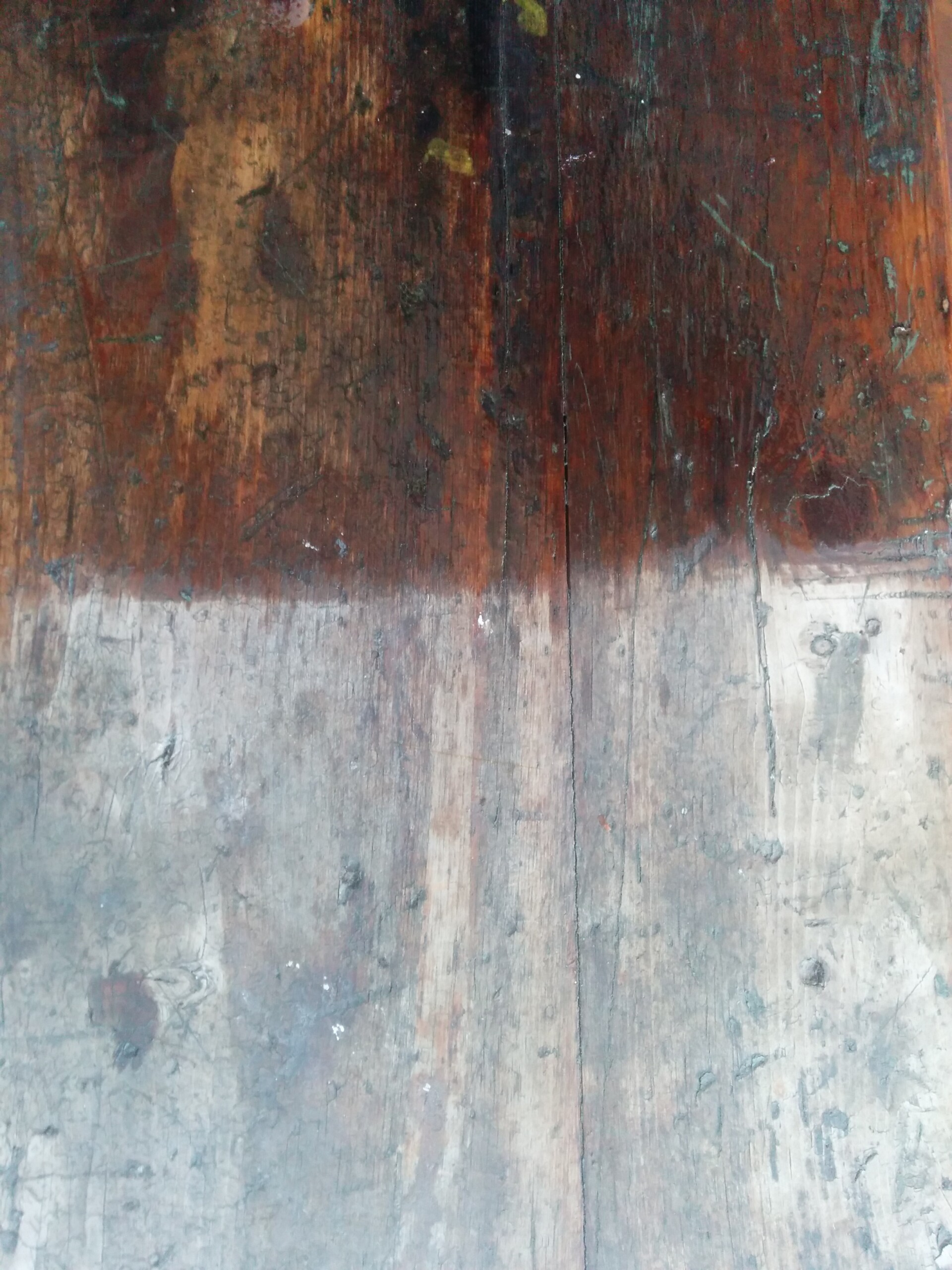Tung Oil is another natural wood finishing oil that is easy to apply, protects and enhances your wood gives you a water-resistant finish and is easy to maintain. Sounds great right? Let’s dive into a guide to Tung Oil and find out what the differences are between Tung Oil vs Hemp Oil.
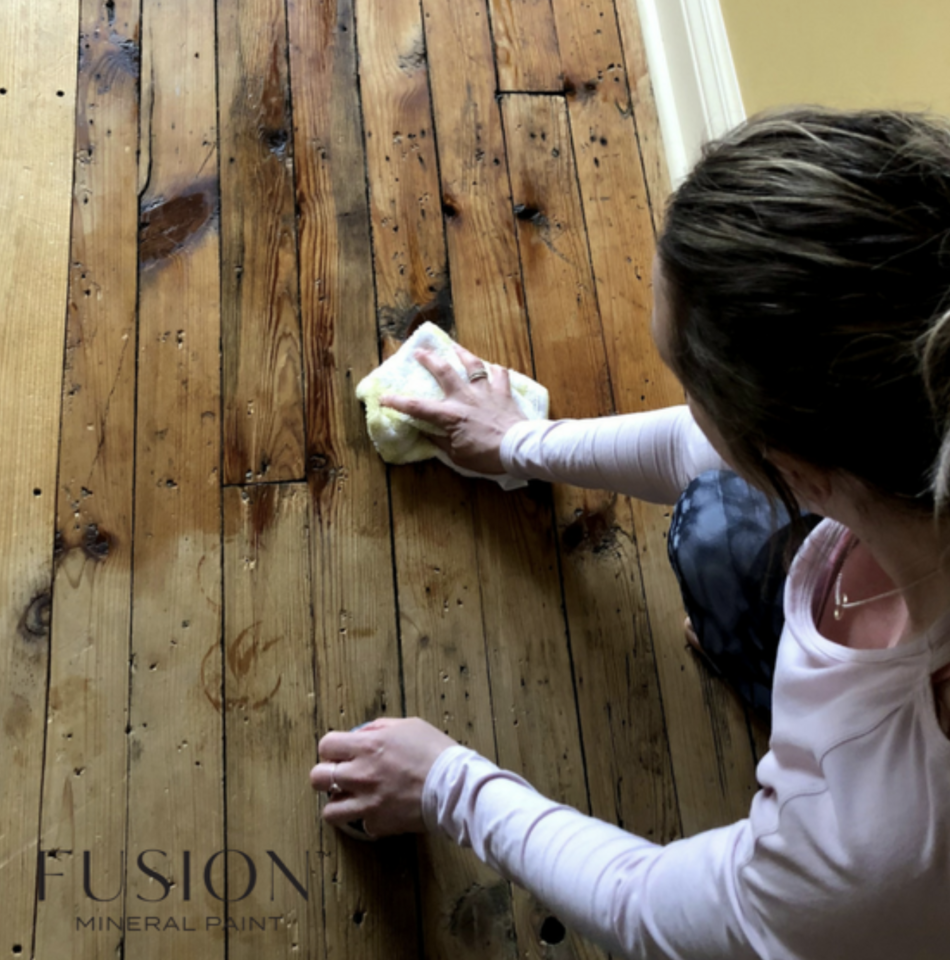
What is Tung Oil?
Tung Oil is a natural wood finishing oil, excellent for interior and exterior projects. Highly resistant to water and abrasion, it is the most durable of all the natural oils. Tung Oil leaves a matte finish that does not yellow over time. The lustre (sheen) can increase with extra coats and burnishing. This finish is preferred for exterior coatings, especially when looking to protect paint finishes like Milk Paint by Fusion.
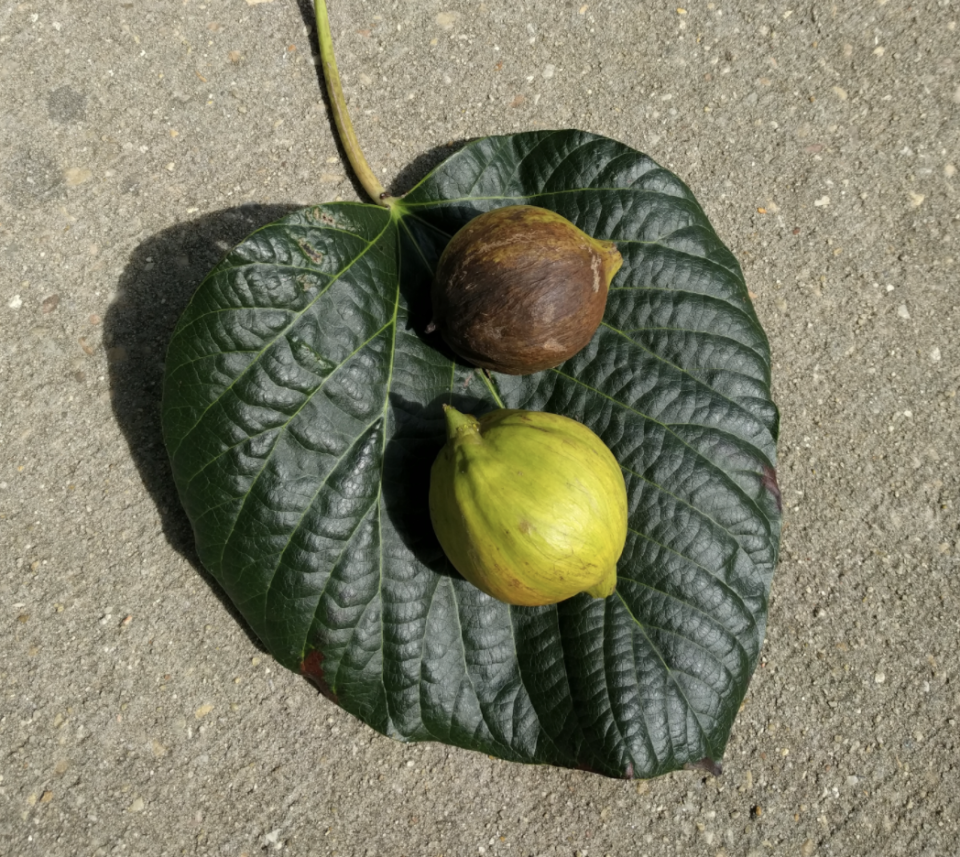
Pure or Polymerized Tung Oil – What’s the difference?
Pure Tung Oil contains no thinners or driers in it, making it food safe and eco-friendly. Polymerized Tung Oil, which is more commonly found in your local hardware or woodworking shop, has thinners or driers in it. Typically, these can be quite toxic. Our Tung Oil is 100% Pure Unpolymerized. We recommend you using our Odorless Solvent to cut your Tung Oil to help it penetrate bare wood more, and to dry faster if this is desired. Our Odorless Solvent is the safest on the market, It is 99.7% monomer free ( this is what causes the headaches).
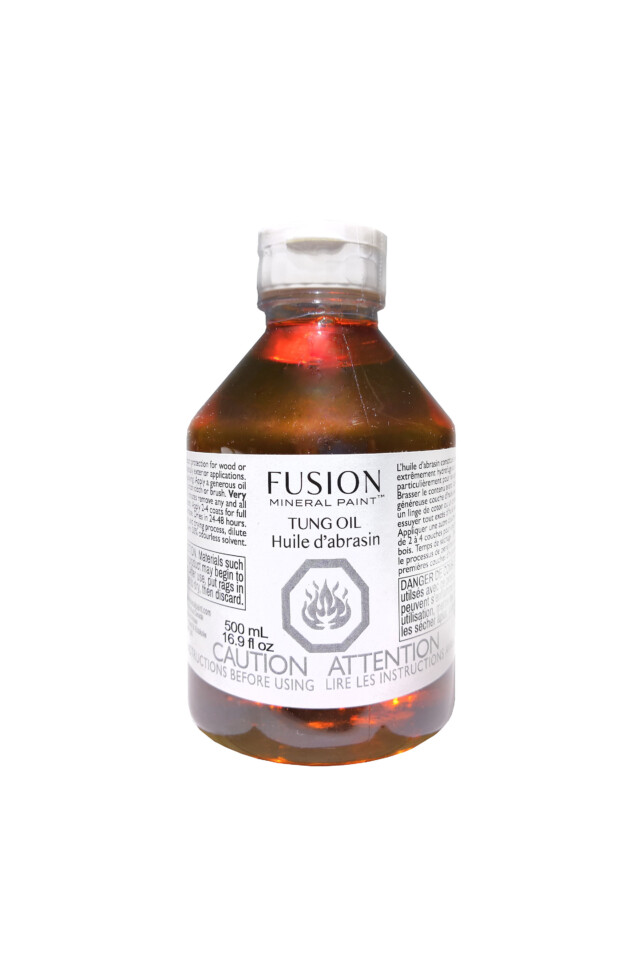
How does it work?
Unlike a Varnish or Water-based poly coating, Tung Oil and Hemp Oil are breathable. Now, what does that mean exactly? Because these oils are from natural pressed seeds with no additives or solvents, they do not leave a plastic coating or film like conventional topcoats, like polyurethane or varnish. The oil saturates the wood, sealing it from moisture from within. You will never have chipping, flaking or peeling! At least 2 coats are recommended; however, the more coats, the more protection. You will want to recoat every few years as the wood starts to look dull and dry. Re-coating is simple and easy, as you will not have to sand or remove any peeling/flaking paint, just add oil, like a conditioner!
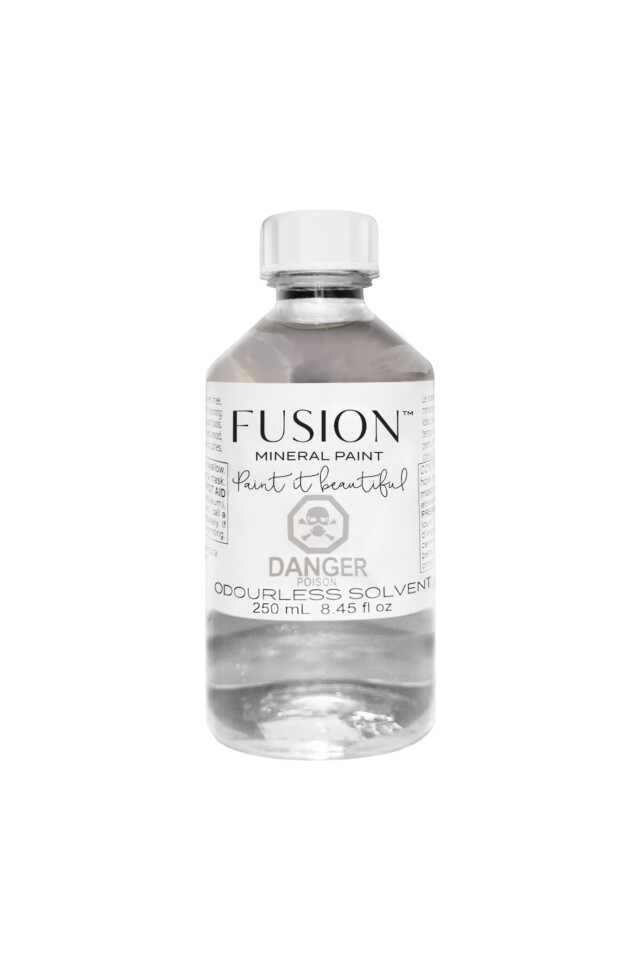
What surfaces and projects can you use these natural oils on?
You can use Tung oil on all raw and properly prepped wooden surfaces. It is also a great finish to use over the top of Milk Paint, as the Milk Paint is porous, it absorbs into the paint, binding with it to provide a water-resistant finish and natural tactile finish. We recommend it for outdoor projects as it has slightly more water resistance than Hemp Oil.
- Floors
- Furniture
- Kitchen cabinets/islands
- Doors & windows
- Woodwork, walls & ceilings
- Food surfaces
- Exterior Surfaces
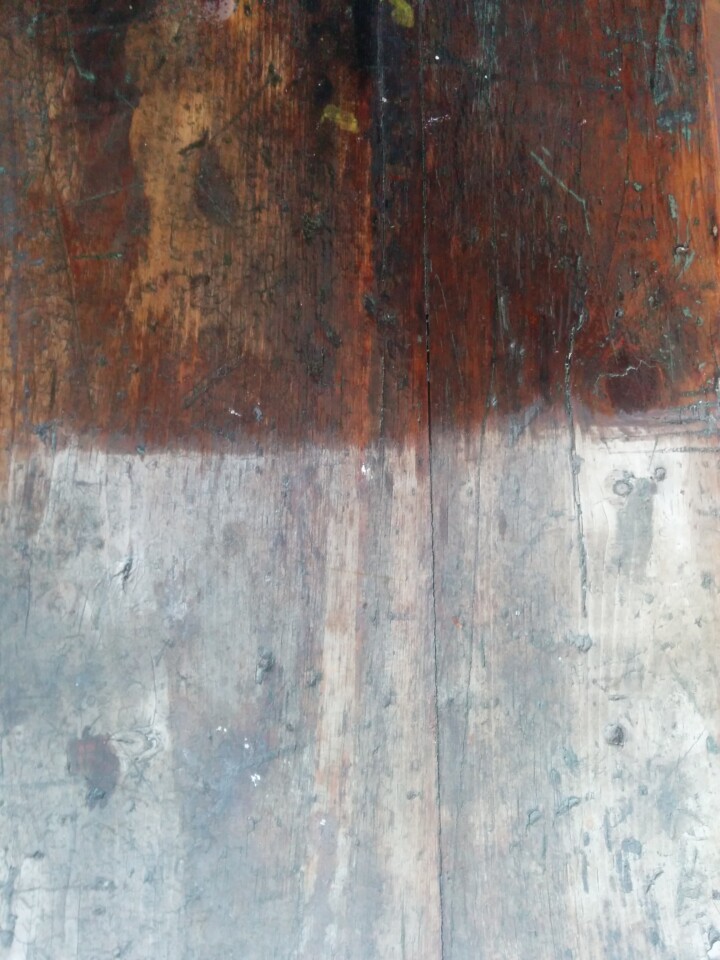
Benefits of Tung Oil
These oils adjust to the expansion and contraction of wood from temperature and humidity and are able to release any moisture trapped within. Typical paints and finishes that contain synthetics do not offer this flexibility, and the surface of them will break as the moisture within the wood is trying to escape. They also do not scratch like conventional plastic coatings.
- Revive old dry looking wood
- Water-Resistant
- Alcohol resistant
- Matte to a satin-matte finish
- Ideal for food surface (without the use of odourless solvent)
- Interior and exterior use
#FUNFACT – You can use Tung Oil to finish concrete, stone brick and even bamboo!
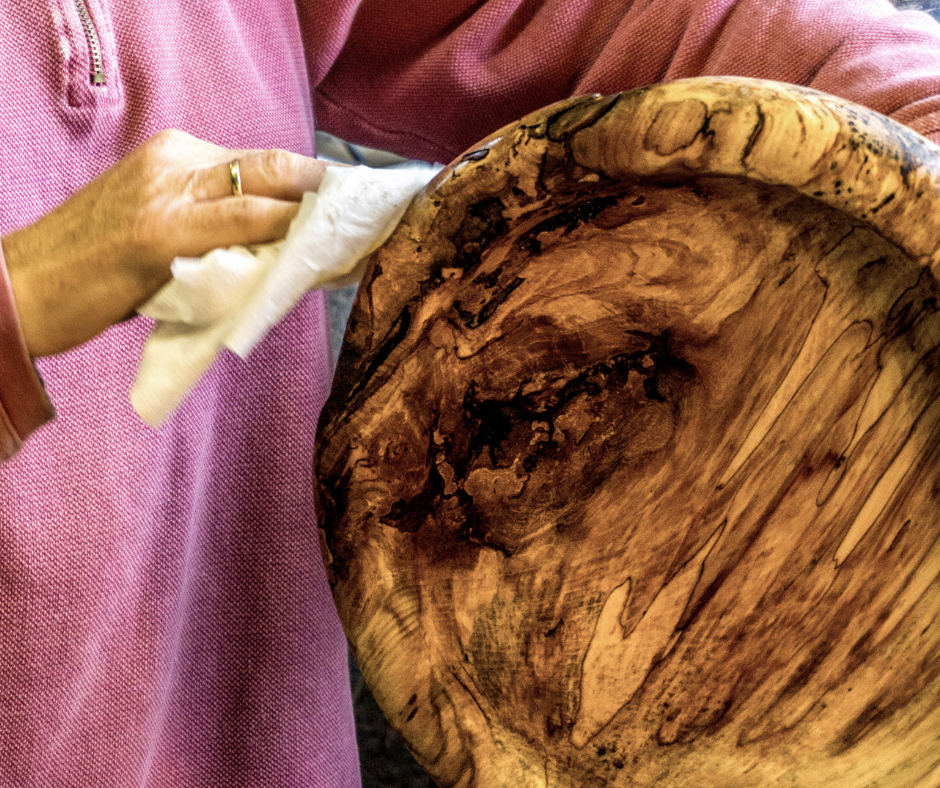
How to use it
Clean and prep your surface
Prep is your friend! make sure your surface is clean, these natural oil finishes won’t penetrate polyurethane or varnish so you would need to remove that by sanding.
Cut the Oil with Mineral Spirits
Thinning the oil with odorless solvent helps it penetrate the surface and speeds up the dry time. Subsequent coats can be full strength but must be wiped down after 15 minutes. Always allow ample drying time (48 hours+). Using it without the solvent the dry time is longer. If you have used a solvent to cut the Tung Oil it is no longer a food-safe finish.
Applying the oil
After the surface has been prepped by removing any debris, or unwanted previous poly coating, you may proceed to apply the Tung Oil finish. Apply the Tung Oil generously with a brush or cloth. Let the wood soak in the Tung Oil for approximately 5-10 minutes. Remove the excess Tung Oil within 10 minutes of application, if you leave the Tung Oil on for too long and it dries it may go sticky and tacky, you don’t want the Tung Oil to start drying on the surface you want all the excess removed.
Tung Oil vs Hemp Oil
Unpolymerized Tung Oil is easy to use, not as easy as Hemp Oil, however, there are pros and cons to every product that is out there. Hemp Oil is easier to apply due to its naturally thin consistency making it spread super fast. It also takes longer to dry, therefore it will not go sticky or tacky if a project is left for a few hours. Tung Oil is easily brushed or wiped on or off, and the drying time-sensitivity of the Tung Oil, Hemp Oil is better for the beginner finisher.
Watch this video to see the differences between Tung Oil and Hemp Oil.
When should you use Tung Oil vs Hemp Oil?
When you have a finish that you want to have extra durability in water resistance and have it last for many years (10+ years), Especially an exterior job, then go with Tung Oil, however, if you don’t mind recoating every few years, then use Hemp Oil. Both of these oil-finished will deepen and enrichen the colour of your wood, the older the wood the deeper the colour.
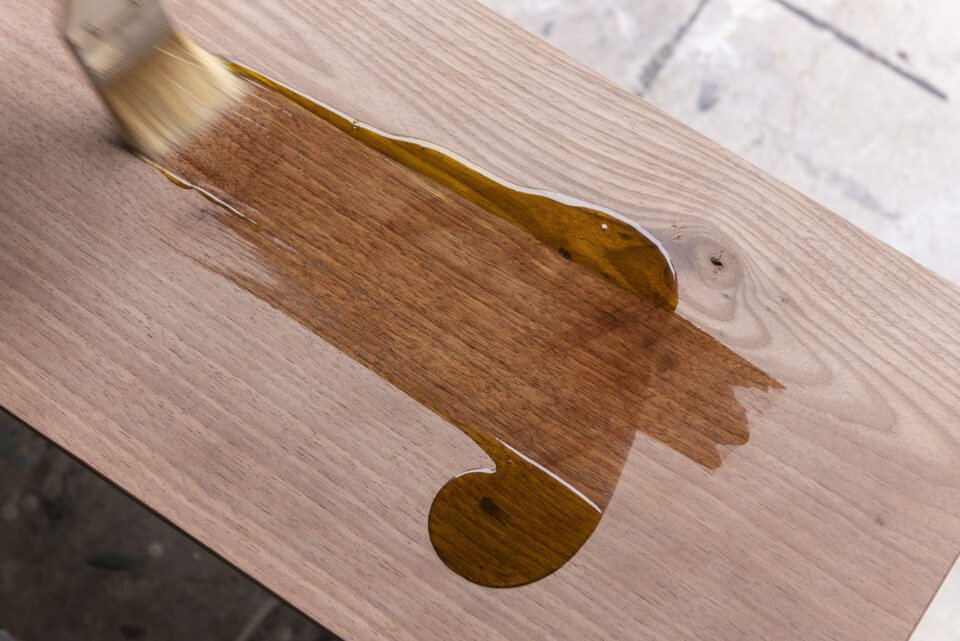
Tung Oil vs Hemp Oil. This handy guide will help you decide which oil is best for your project.
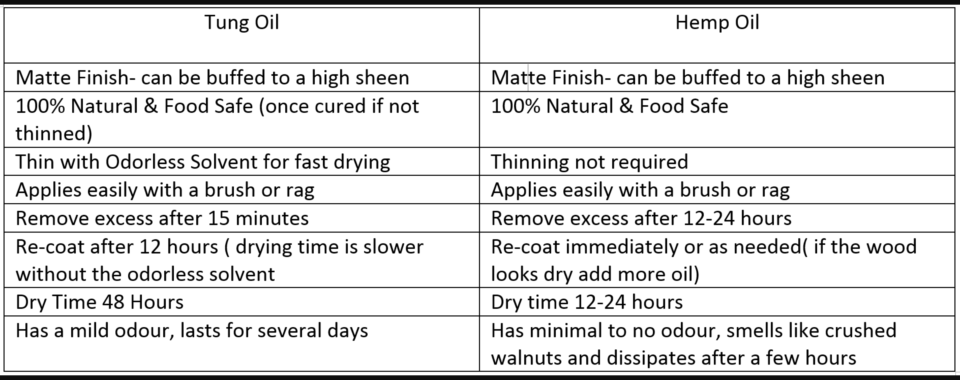
Watch Jennylyn revamp her garden flower boxes.



